|
The antiquity of the Tartans is a
subject which has given rise to much
research amongst scholars, and some
speculation amongst their critics.
Some
scholars find evidence that chequered cloth
was not peculiar to the Scottish
Highlanders, but is really a survival of a trait
common to all the great branches of the
Celtic race. Logan quotes a Roman author to show that the bright
patterns shown in the dress of the
ancient Gauls had been noticed and admired by their conquerors.
On the other hand, some critics go the
length of saying, that while Tartans in themselves may be
old, the distinctive patterns to which
clan names are attached, are only an affair of the day-before-yesterday
and cannot be traced further back than the early part of the present
century.
This view is too absurd to require
refutation.
While jewels, on account of their
intrinsic value, and arms and armour, by reason of their associations
with prominent members of
noble families, have been handed down as heirlooms and
so preserved for centuries, clothing has
very seldom been considered worthy of preservation, so that it is only
by some accident that articles of dress, having any claim to antiquity,
have been preserved. When King Robert
the Bruce, in the tight at Dalree,
lost his plaid or mantle, and with it the jewelled brooch which fastened
it; the brooch was at once considered a rich prize, and has been
preserved through the many
vicirsitudes of five hundred and eighty years. It is now the famous
"Brooch of Lome," but no
thought was given to preserve the plaid. It need not be a matter of
surprise, therefore, to find that comparatively few specimens of ancient
Tartans are in existence, yet there are sufficient to show the antiquity
of Clan and Family Tartans.
Some
of the Tartans worn by Prince Charlie are
still preserved, likewise a
plaid worn by one of his followers, Murray of Tullibardine, which for
fineness of texture cannot be surpassed by the best productions of
woollen manufacturers of the present day.
The "Jacobite" Tartan of this
catalogue is from a specimen made not later than 1712, and was designed
to be different from any known
Tartan of that period, having a considerable proportion
of orange.
The chief of the Clan Macpherson,
Cluny of Cluny, has Tartans in his possession at least 200 years old.
One of these is almost identical with the "Makanphersonis " described in
the "Vestiarium,"
The "Vestiarium Scoticum" is a
description of seventy-five Tartans, divided into
—Highland, Lowland, and Border Clans
recalling the almost forgotten fact that
clans were not confined to the Highlands and Islands. The M.S. is
supposed to have been written in the latter part of the 15th or the
early years of the 16th century. The author, in an "Envoi," calls
himself "Schyr Richard Urqvharde, Knycht."
He seems to have been
a gentleman and a soldier of fortune, well acquainted
with
"Heravltrye and armovris
Cvrtlye gvys and tovrnai,
Hunter craft and forestrye."
He
has had a remarkable facility in describing
in words the characteristics of the
different Tartans, borrowing for this purpose a few terms and phrases
from the kindred subject of heraldry
— "fields, lists," etc.
That his descriptions do
not correspond with many of the
Tartans of the present day should cause no surprise; it is more than 300
years since his book was written; Scotland has seen many
changes in that time, the clan system has
disappeared except in the case of but a few of the most powerful. The
risings in favour of the old
Stewart line in 1714 and 1745 did
much to bring to a close that ancient
form of society. The chiefs became poor—were outlawed if they were so
fortunate as to escape the headman's axe. The wearing of the ancient
dress was made a
criminal offence. Is it surprising
that the knowledge of some Tartans was quite lost, and that consequently
some of those which were revived were not quite the same as formerly?
Indeed it does not require any
special reasons to account for changes in such a long stretch of time.
It is well known
to all who
take an interest in Tartans that there is a
constant tendency to produce slight
variations in the pattern, and great care is needed to keep this
tendency down. The Tartans now worn
by the Highland regiments shew
this in a very marked manner take any of these regiments, and it will be
found that the officers' plaids are very different in the shades of
colour from their kilts, while those of the rank and file are still
further removed from the shades of the plaid, yet these are all the same
Tartan.
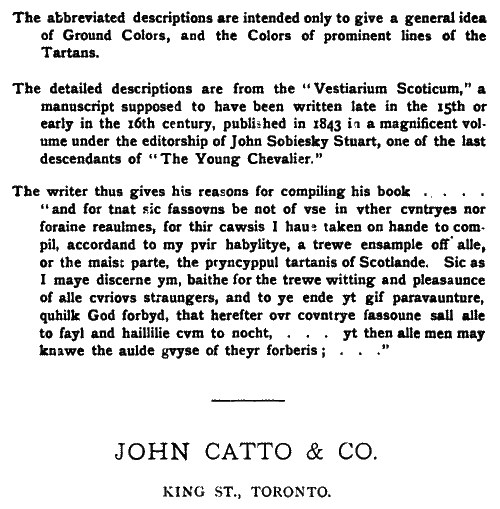
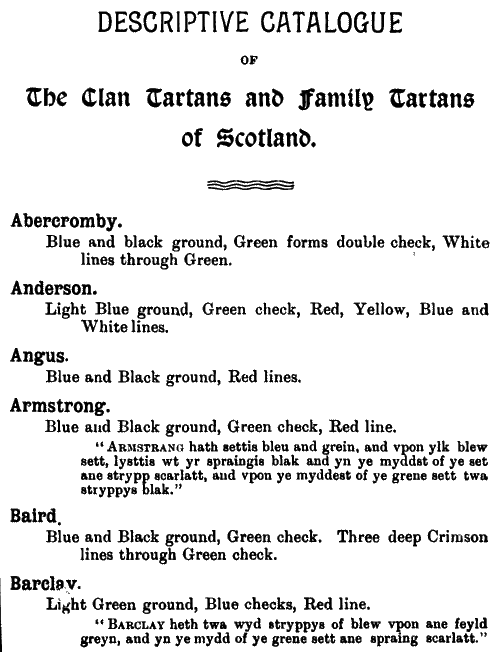
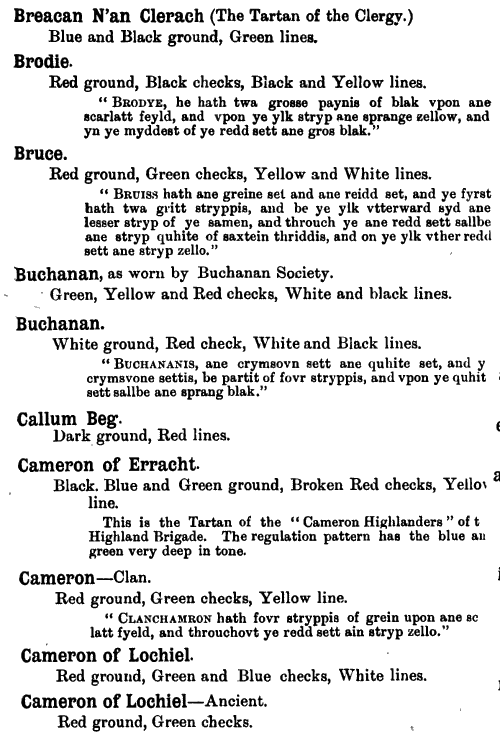
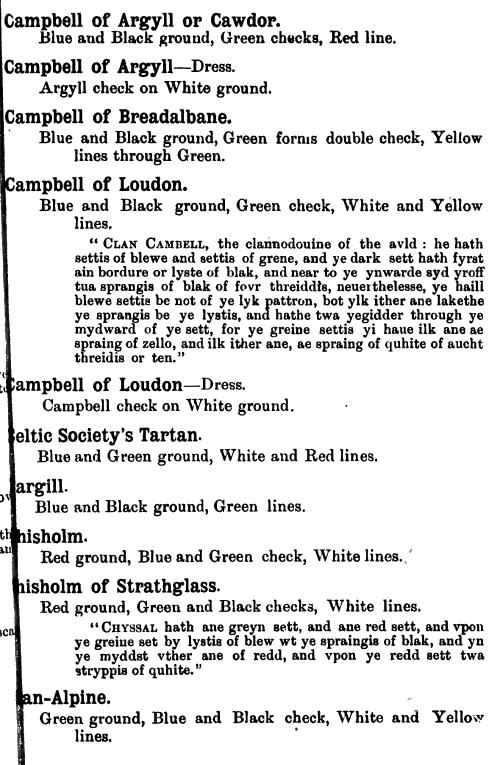
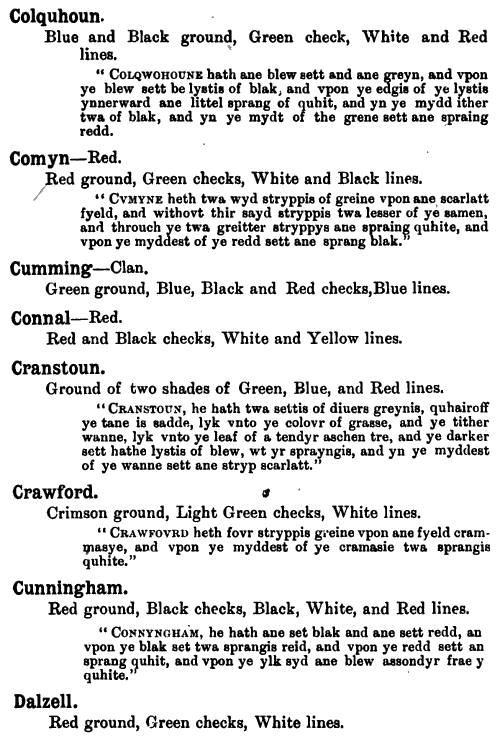
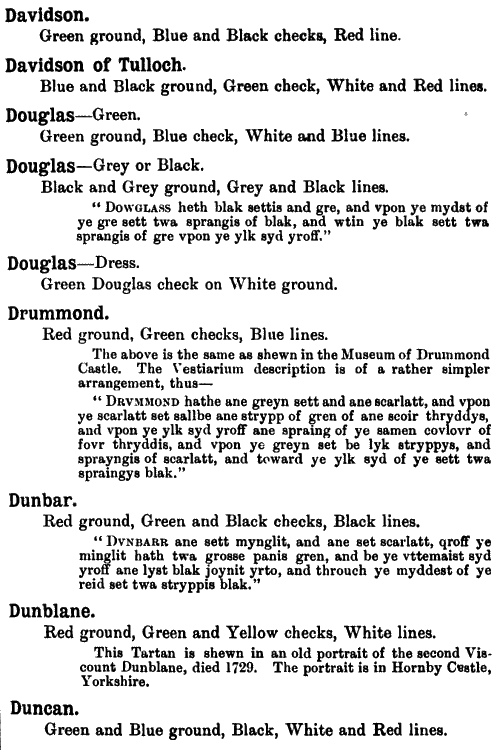
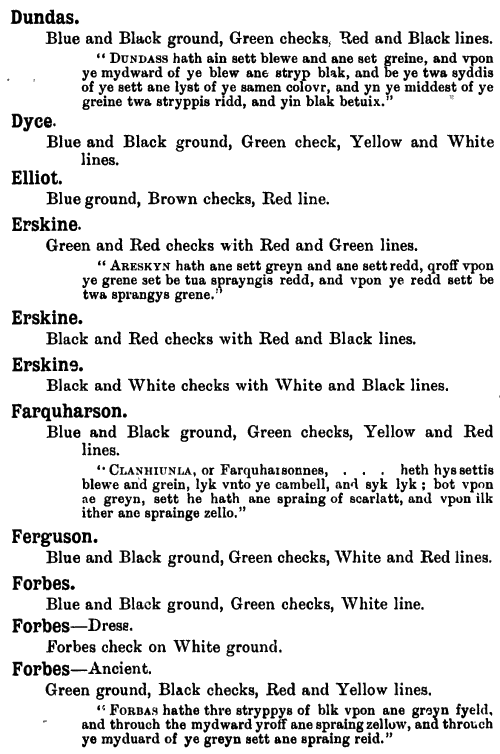
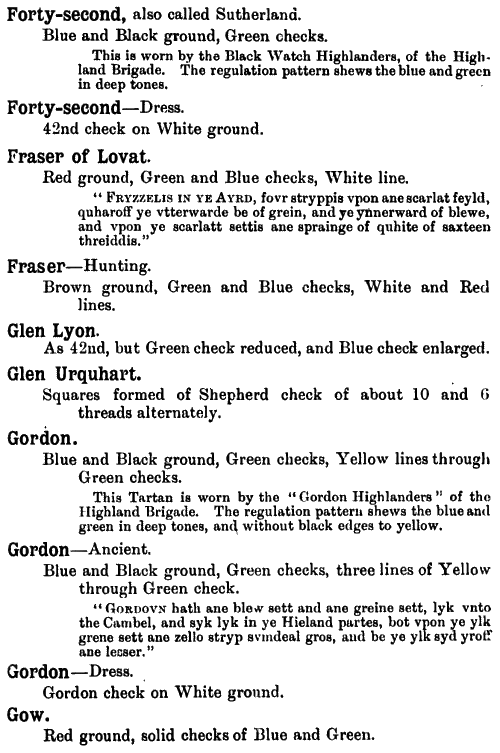
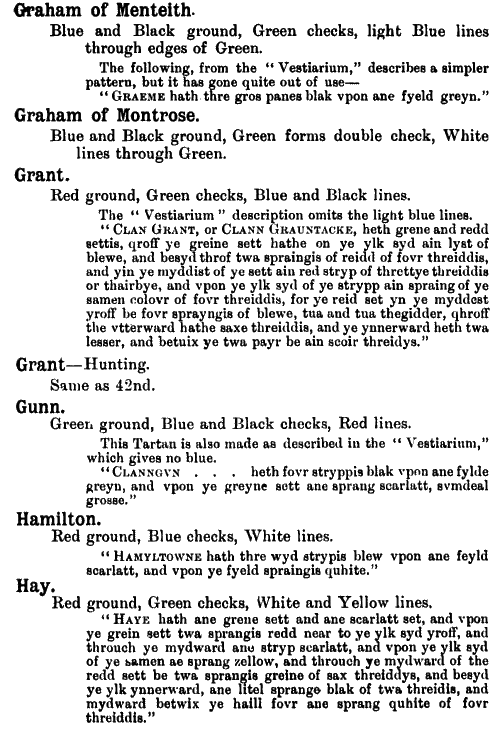
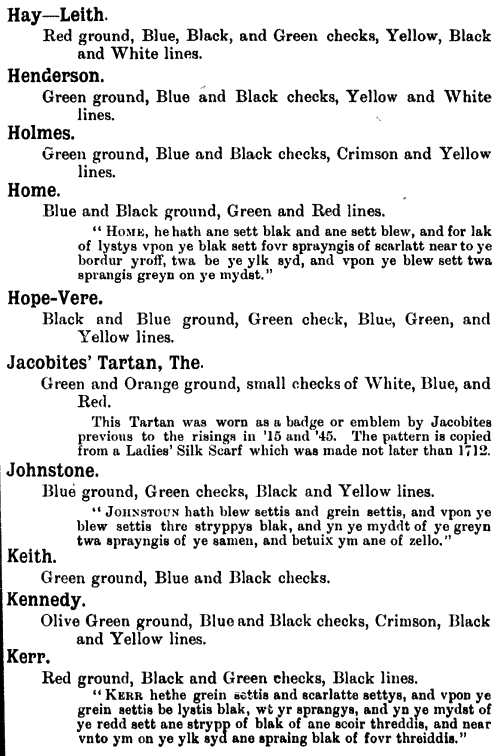
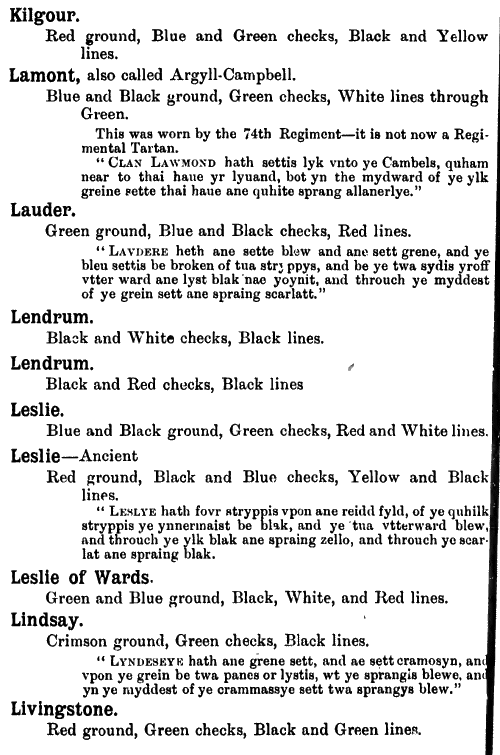
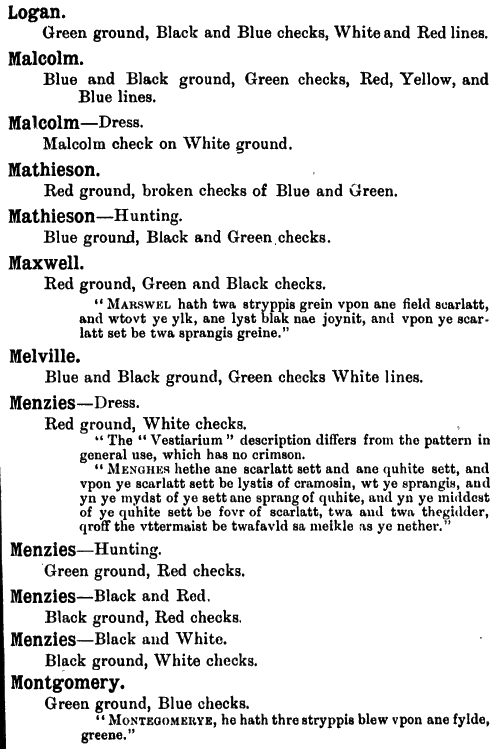
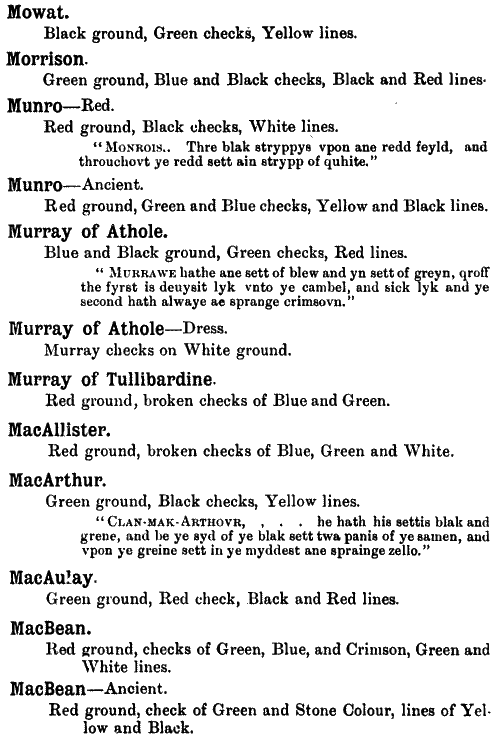
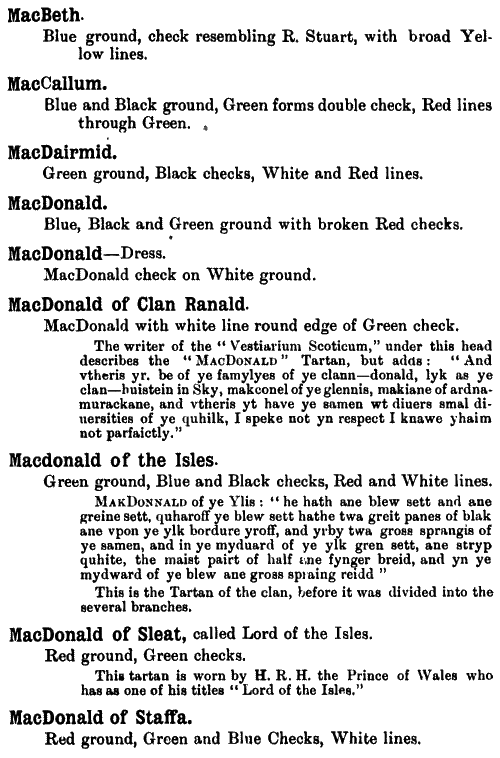
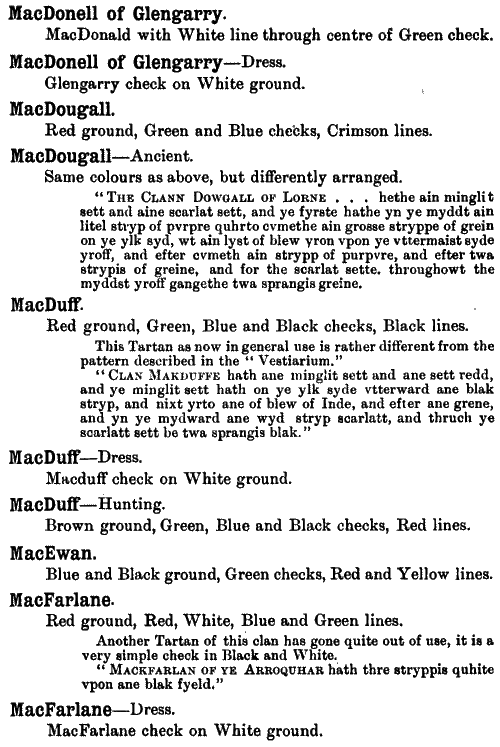
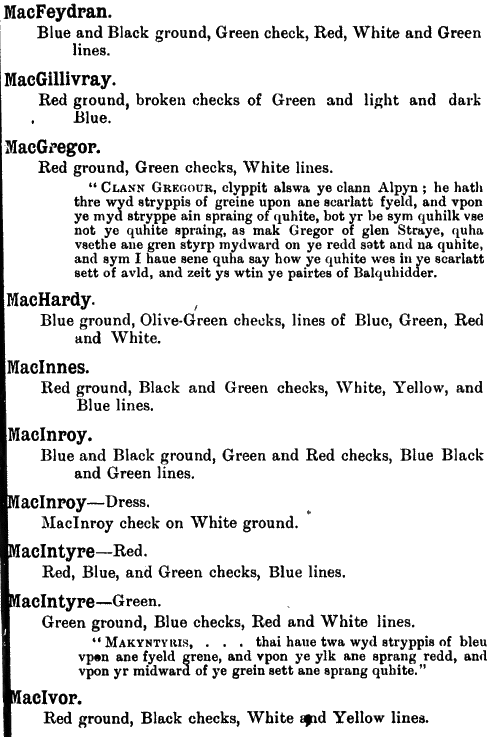
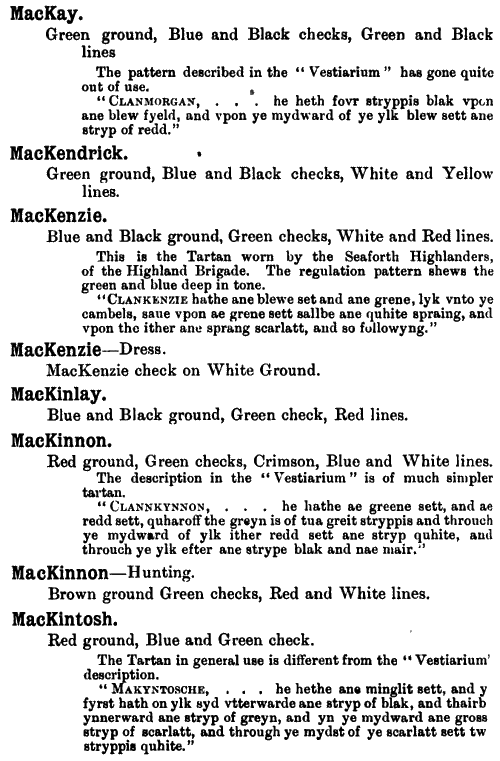
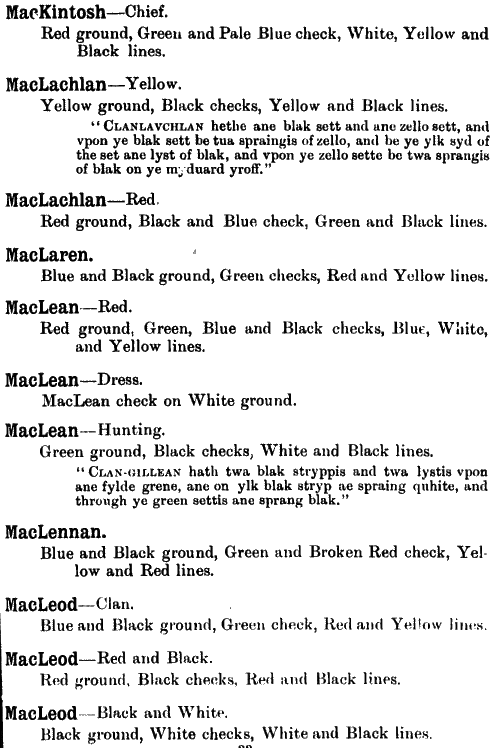
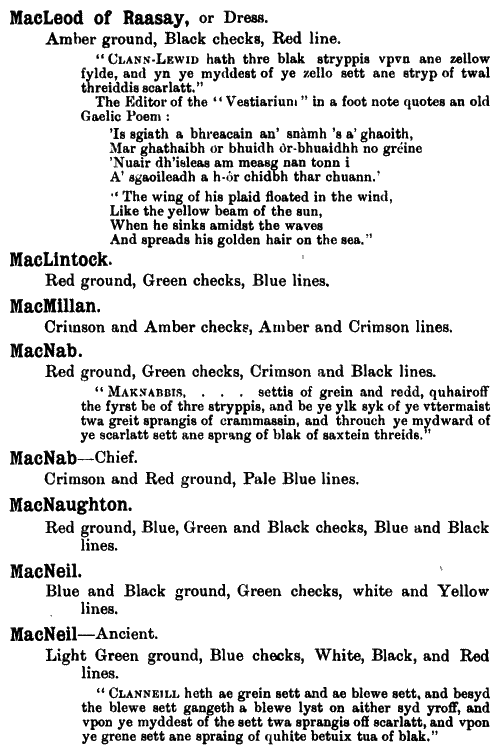
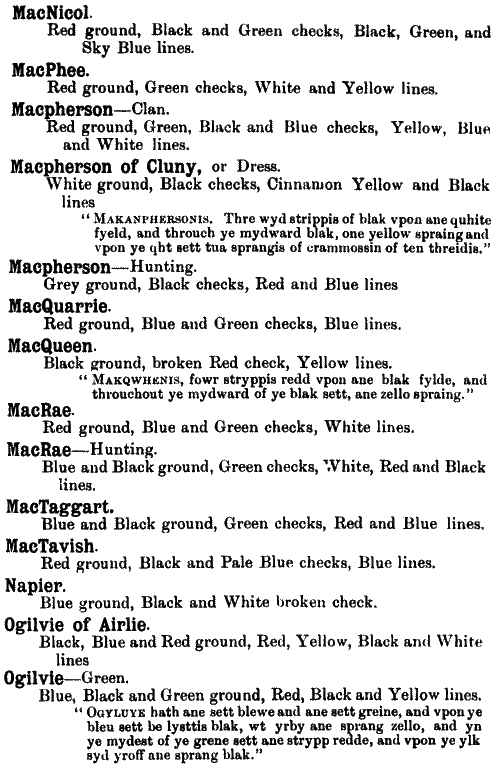
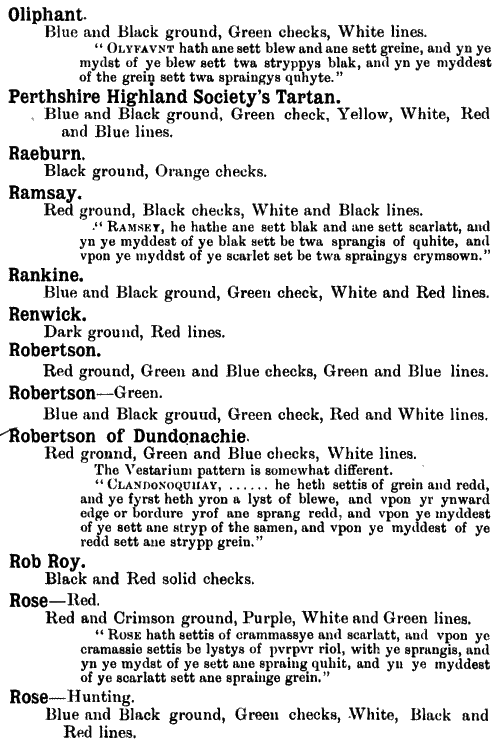
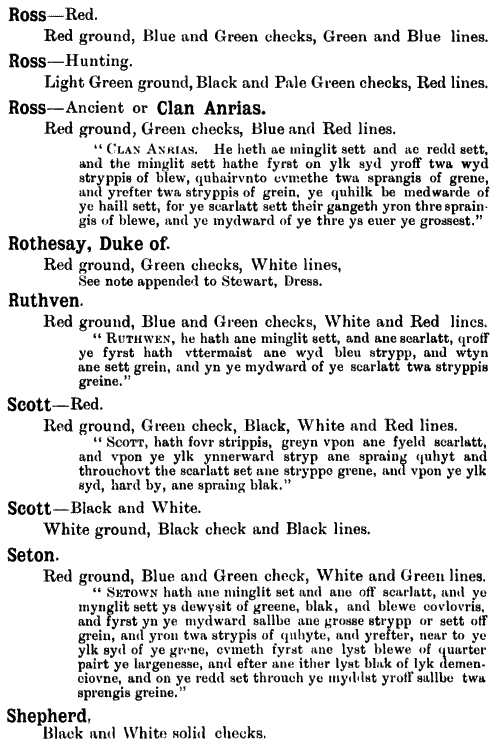
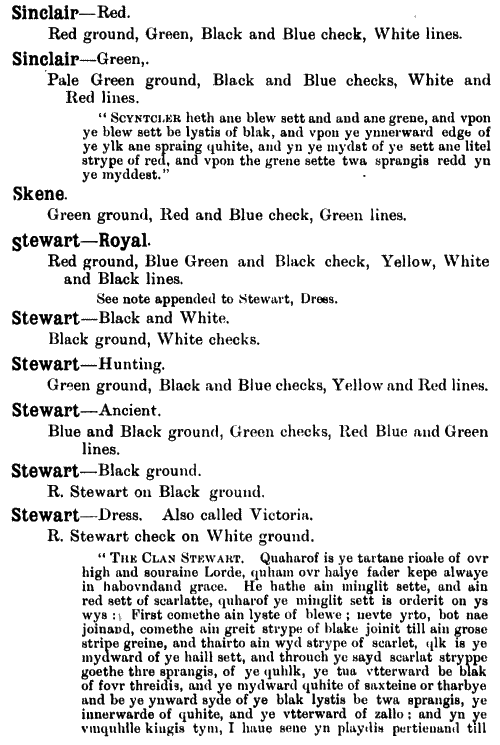
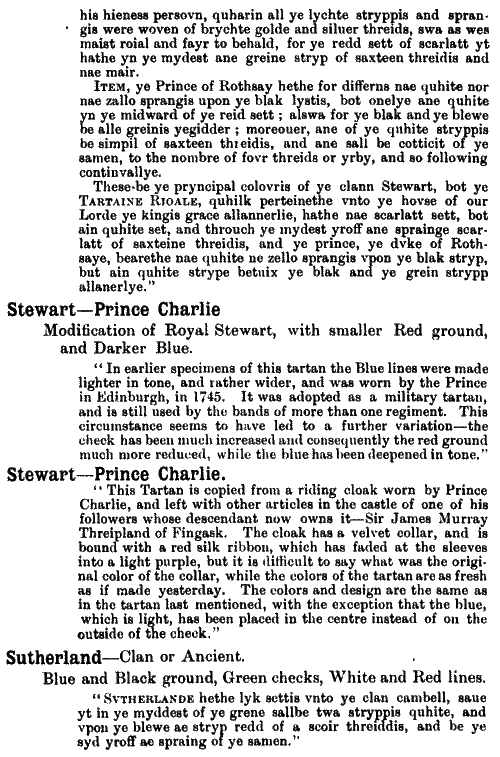
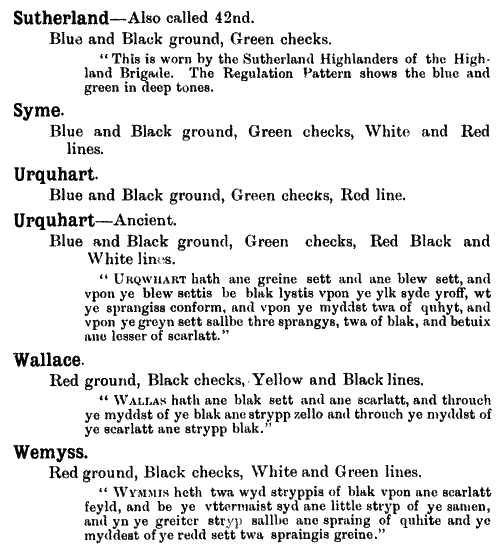
You
can also view the pdf scan of this book here! |
